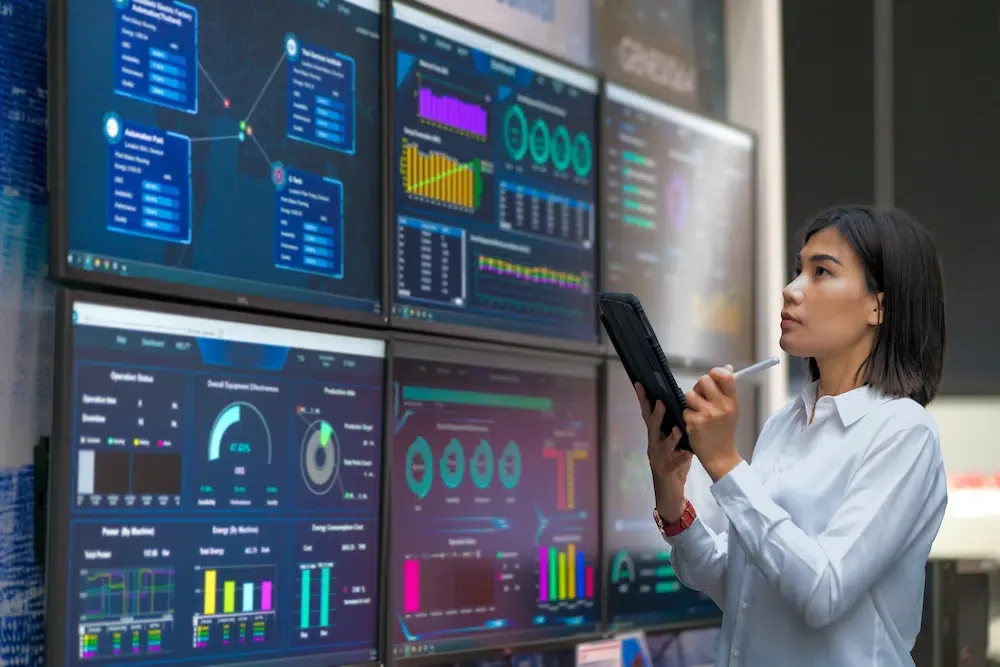What SAP Customers Can Expect with Industrial IoT and Artificial Intelligence
Accenture to Tie IIoT and AI Capabilities Together in AIP+
SAPinsider recently interviewed leadership at Accenture Digital to obtain a greater understanding of Accenture’s Industrial Internet of Things (IIoT) and artificial intelligence (AI) platform strategy with Connected Platforms as a Service (CPaaS) and the Applied Intelligence Platform (AIP) and gained some insight into what it might mean for SAP customers.
What IIoT Capabilities Does Accenture Bring to the Table?
I spoke with a managing director of platform products at Accenture last week, and he laid out the current functionality of Accenture’s CPaaS and the improvements that will come as it transitions all its capabilities to its AIP+ service.
Since Accenture started working on Industrial Internet of Things (IIoT), it has always placed an emphasis on balancing edge and cloud computing with a prioritization of the edge. When it says it focuses on the edge, Accenture means that is has worked with the nonprofit, open-source Eclipse Foundation on Kura, its container for running machine-to-machine and IIoT apps for asset and operations monitoring in gateways. This has empowered Accenture clients to move processing logic to the edge and accommodate different edge gateways. With this capability, Accenture first launched CPaaS as an on-premise solution but now partners with Amazon Web Services (AWS) and Microsoft Azure.
Obviously, as a major SAP partner, Accenture is open to integrate with SAP HANA and SAP’s supply chain management (SCM) solutions, such as SAP Integrated Business Planning. Alerts from the logic running at the edge can trigger SAP processes to replace parts or schedule maintenance.
Of course, running on gateways still means that most factories will need some sort of edge middleware to collect data from the operational technology on the shop floor, but requiring a gateway does guarantee a certain amount of flexibility and compute power. If running applications directly on older industrial PCs or historians, manufacturers can find limitations in these areas.
What About AI and Analytics?
When it comes to AI and analytics, Accenture initially launched the Applied Intelligence Platform in February 2019 at Mobile World Congress (MWC), building on the Accenture Insight Platform for machine learning and deep learning. Currently, AIP empowers Accenture customers to deploy pre-configured machine learning solutions and develop new solutions without the need for data scientists. Like CPaaS, AIP uses open-source standards, services, application programming interfaces (APIs), and tools with an emphasis on edge computing and machine learning at the edge. The pre-built solutions include applications for remote monitoring with failure predictions and fleet management with route optimization.
Accenture’s most recent acquisitions to build on AI and analytics capabilities include Kogentix, Mindtribe, and Opalytics.
What Will Happen Next?
At the end of September or early October 2019, CPaaS capabilities will transition entirely to the Applied Intelligence Platform and will rename it “AIP+”. With this transition, CPaaS/AIP+ will no longer work with the Eclipse Foundation but will instead swap it for the EdgeX Foundry, a similar organization hosted by the Linux Foundation and promoted by its partner, Dell Technologies. This will provide Accenture and its clients a larger ecosystem of developers and partners for open-source protocols and IIoT applications. This new version of AIP+ will also come with improved, higher-frequency time-series data processing at the edge.
What Does This Mean for SAPinsiders?
Based on everything Accenture had to say, the following takeaways will help ensure SAP customers can plan accordingly:
- Connect the right machines. All the AI and computing power in the world won’t make a difference if you’re not actually solving business problems. IT and OT professionals should communicate to figure out what data they need to improve specific business metrics.
- Put together a business case for IIoT edge gateways. Edge gateways might not make sense for every company’s circumstance, but they do provide more flexibility and compute power for IIoT and AI apps. We don’t like to tell you how to spend your organization’s money, but we recommend that you investigate it.
- Plan the balance of edge and cloud. You cannot understate the importance of cloud computing. It empowers you to collaborate as well as process and store large amounts of data cheaply. You can also train machine learning models quickly with cloud computing, assuming you have the right data; however, IIoT apps and machine learning models often provide the most value if they run in real time in context at the edge.
- Start prioritizing AI capabilities. Almost every IIoT app can improve with machine learning. IIoT means generating live data to understand, predict, and react to live situations. AI means the same thing. Figure out how to use IIoT apps to train and deploy machine learning models that can operate at the edge.
Following this strategic guidance should help SAP customers plan for IIoT and AI in a way that generates measurable business value. For additional insights and lessons learned, look for the upcoming SAPinsider benchmark report IoT platforms for supply chain and manufacturing.
Pierce Owen can be reached at Pierce.Owen@wispubs.com.




